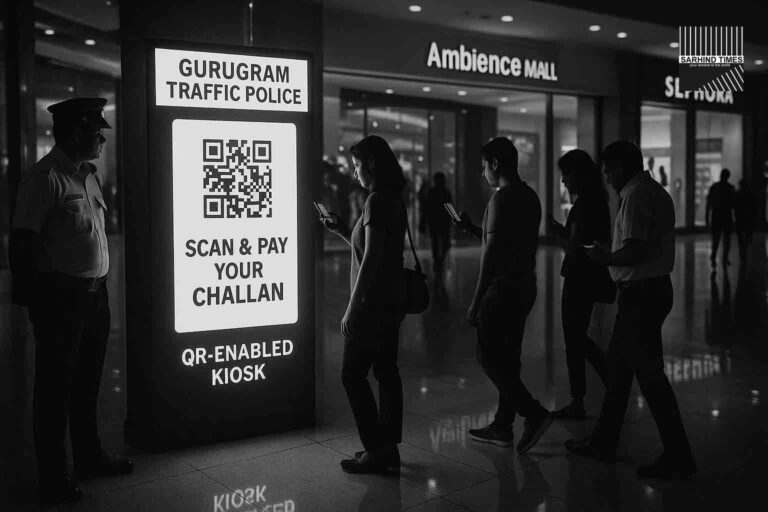NEW DELHI – In a potential shift for India’s television regulation landscape, the Telecom Regulatory Authority of India (TRAI) is considering reforms that would let distribution platform operators (DPOs) — such as Tata Play, Airtel Digital TV, GTPL, and local cable MSOs — curate their own channel bouquets instead of being confined to broadcaster-defined packages. For consumers, the move may promise leaner, more tailored channel selection and relief from creeping annual bills. Broadcasters, however, warn that fragmentation could undercut the value of bundles, complicate rights and pricing, and weaken economies of scale.
At stake is not just how TV is packaged and billed—but how legacy broadcast TV adapts to pressure from streaming’s on-demand, à la carte model. If formalized, the proposal could recast the DTH/cable space into a more flexible, consumer-centric marketplace — but only if guardrails, transparency and measurement systems evolve in tandem.
I. The Regulatory Landscape: From Bundles to Choice
A. The Current Paradigm & Its Origins
Under India’s Tariff Order, 2017 and subsequent interconnection / addressable system regulations, broadcasters currently design channel bouquets (bundles) and declare a Maximum Retail Price (MRP) for pay channels. DPOs (distributors) are then required to offer those bouquets, along with a la carte pay channels, with certain constraints.
Critically, when DPOs form their own bouquets from pay channels of one or more broadcasters, regulation has long limited them to offering discounts up to 15% off the sum of a la carte channel MRPs. Broadcasters argue this preserves bundle value and avoids deliberate disaggregation or cherry-picking of only popular channels. DPOs, by contrast, have long contended that the 15% cap restricts their ability to innovate, compete, and pass savings to end users.
In 2024, TRAI amended the regime to permit up to 45% discount for broadcasters in forming their own bouquets, though the DPO 15% discount ceiling remained unchanged. That discrepancy has long been a bone of contention between DPOs and broadcasters.
B. The Proposed Change: DPO-Level Bouquet Flexibility
Now, reports indicate that TRAI is studying a more permissive regime: allowing DPOs to “break” existing broadcaster bouquets, combine channels across multiple broadcasters, and create retail-level bundles of their own design. Under this model, a consumer might pick a “sports + regional + news” pack that DPO curates (drawing from multiple broadcasters), rather than being forced into large pre-set bundles.
Such a shift could require new tariff filings, disclosure mandates, and reforms in viewership measurement and rights structuring. Broadcasters fear it could erode bundle economics and demand renegotiation of content licensing. DPOs argue it aligns linear TV with how audiences expect content today — flexible, selective, and transparent.
II. Stakeholder Positions: Support, Resistance & Tension
A. Arguments from the Distributors’ Side
- Consumer choice & cost control
DPOs contend that allowing custom bouquets will reduce “unwanted channel” baggage in bills. If consumers pay only for what they watch, bill creep could be constrained. - Par with streaming logic
With OTT platforms offering à la carte subscriptions, linear TV risks losing relevance if it sticks rigidly to fixed bundles. DPO flexibility could help retain users. - Innovation & competition
DPOs argue that the existing regime stifles package design and marketing creativity. Customized packs could differentiate providers, especially local cable MSOs. - Paring down inefficient channels
If unpopular or niche channels can be left out of consumer packages, capacity can be better utilized for high-demand content or niche experimental channels.
B. Counterarguments from Broadcasters
- Bundle economics & sustainability
Broadcasters maintain that bundles help fund a wide variety of channels (including niche ones). If distributors cherry-pick only the most popular ones, revenue for less popular but culturally important channels may suffer. - Rights, licensing complexity & fragmentation
Content licensing is often arranged at the bouquet level. If DPOs reassemble channels arbitrarily, it may complicate licensing, royalty splits and performance accounting. - Discount compression and cannibalization
Broadcasters fear that excessive discounting or flexible bundling by DPOs could dilute the value of their MRPs and cannibalize their revenue models. - Operational chaos & neutrality
If every DPO has its own bouquet mix, channel lineups may vary greatly across platforms, harming uniformity, EPG (electronic programme guide) coherence, and consumer confusion.
C. Middle Ground & Regulatory Constraints
Those more moderate propose co-designed bouquets or joint bargaining frameworks between broadcasters and DPOs, rather than full unilateral rights. Some suggest that DPO flexibility should come with guardrails (minimum channel inclusion, discount caps, transparency rules).
Others argue that regulatory oversight must ensure that bouquet fragmentation doesn’t morph into anti-competitive packaging or forced bundles disguised differently.
III. Consumer Impact & Risks
A. Potential Benefits for Viewers
- Lean bills: Only pay for relevant channels—less “waste” in paying for unwanted genres.
- Tailored content mix: Users can pick combos (e.g. sports + regional + news) rather than all-or-nothing bundles.
- Better transparency: Ideally, DPOs would have to clearly list channel composition, discounts, and per-channel pricing.
- Flexibility to shift over time: As viewer preferences evolve, subscription bundles may be updated or swapped more easily.
B. Possible Pitfalls & Consumer Risks
- Complex choice overload
Too many package permutations might confuse rather than help. Consumers may struggle to compare across DPOs. - Hidden fees and “packaging tricks”
DPOs might use bundling add-ons, mandatory “anchor channels,” or artificial cross-subsidies. - Fragmented experience
Inconsistent EPG placement, differing channel numbering, and missing overlaps across DPOs could degrade UX. - Discount arms race & unfair squeezes
DPOs might aggressively discount popular channels, pressuring small broadcasters. Or side deals might favor certain channels, hurting neutrality. - Cross-subsidy collapse
Some niche / regional / minority interest channels thrive on bundle cross-subsidy. If they lose it, they may struggle financially or vanish.
IV. Implementation Challenges & Regulatory Mechanics
A. Tariff Filings & Disclosure Norms
If DPOs create their own bouquets, they will need to file new Distributor Retail Prices (DRPs) for each custom pack and disclose them transparently. Also, they may need to show how the new pack pricing correlates with a la carte pricing and discount logic.
B. Interconnection, Content Rights & Licensing
Broadcasters and DPOs will need to renegotiate interconnection agreements, content rights, and licensing terms to account for greater downstream flexibility. Performance metrics, revenue sharing, and reporting mechanisms must adjust.
C. Viewership Measurement & Analytics
Customized packs imply that viewership data needs to be more granular: which channels are consumed, by whom, and at what times. TRAI or third parties may need to enforce standardized metrics and independent audits.
D. EPG / Channel Listing Standards
Even with flexible bouquets, the consumer experience demands consistency in EPG (genre grouping, channel numbering, language blocks). Distributors must abide by norms in listing channels so users aren’t disoriented. EPG regulation is already present in interconnection/QoS rules.
E. Transition & Phasing
A sudden shift may disrupt legacy agreements. TRAI may need to phase in changes (e.g. first in metros, then nationwide), allowing stakeholders time to adjust and renegotiate.
F. Consumer Protection & Complaints
Rules must mandate opt-in / opt-out clarity, notice periods for package changes, portability between DPOs, and clear grievance redressal (nodal officers, dispute mechanisms).
V. Comparative & International Context
A. Global Practices & Lessons
In many mature markets, cable / satellite / IPTV providers allow “pick your channels” or tiered à la carte bundles. But the economics often rely on carriage agreements and bulk licensing. The U.S. and parts of Europe have grappled with “skinny bundles” and “unbundling” debates.
India’s challenge is more complex: many operators, regional languages, layered governance, and content licensing fragmentation.
B. India’s Unique Constraints
- Multiple languages, regional content markets, diverse viewer preferences
- Local MSOs (cable operators) with patchwork infrastructure
- Legacy interconnection agreements and broadcast contracts
- Regulatory history that tried to guard broadcasters’ interests while introducing consumer choice
Thus, adaptation will be messy and calibrated.
VI. What to Watch: Key Indicators & Milestones
- Release of TRAI consultation paper / draft regulation
Will specify scope, limitations, discount caps, reporting norms. - Stakeholder responses & public commentary
Broadcasters, DPOs, consumer groups will submit counter-views. - Pilot implementation zones
TRAI may allow trial flexibility in select cities or states. - New tariff filings & DRP disclosures
DPOs may begin submitting new price schemes. - Consumer experience & uptake
How many subscribers shift to custom bouquets? Do bills fall? - Broadcaster reaction & counterstrategies
Bundles may be restructured; marketing incentives may change. - Consolidation or partnership moves
Weaker DPOs or broadcasters may realign or merge to survive in a more competitive pack market.
VII. Editorial Perspective: Balancing Flexibility and Fairness
The thrust behind TRAI’s move is timely: linear TV must evolve or be left behind in a streaming-driven landscape. Recognizing that consumers increasingly detest paying for unwanted content, giving distributors more power to tailor is prudent. But policy must guard against unchecked fragmentation or unfair bargaining leverage.
To succeed, TRAI’s framework should aim for:
- Transparent pricing logic (DRP vs MRP, discount rules)
- Minimum inclusion thresholds (e.g. basic news, public channels)
- Protecting smaller broadcasters via minimum guarantees
- Robust viewership measurement & audit regime
- Phase-wise rollout and consumer choice safeguards
- Uniform EPG / UX standards so consumers don’t feel lost
If done right, TV in India could morph from a rigid, all-or-nothing model into a more consumer-centric marketplace, reimagined for the streaming age. But missteps — aggressive discounting, channel exclusion, unfair deals — could erode trust and drive more viewers toward unregulated IPTV / OTT alternatives.
We are at a crossroads for broadcast in India. This bouquet flexibility debate may well mark a turning point: whether traditional TV reinvents or continues to shrink.
#TRAI #Television #Cable #DTH #Consumer #MediaPolicy #Broadcasting #TVRegulation #Flexibility #ConsumerChoice

























+ There are no comments
Add yours